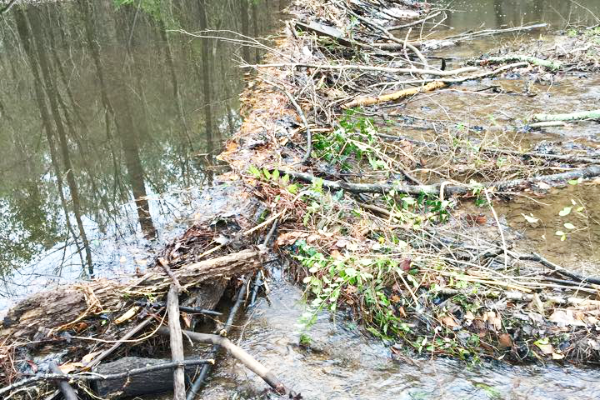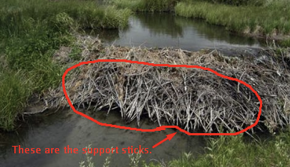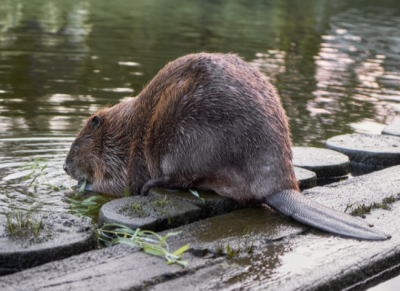How to remove a Beaver dam

Although beaver dams are important for wetland ecosystems, they can sometimes prove to be detrimental for farmers and homeowners. Beaver dams can often divert the flow of water towards crops or neighborhoods, causing millions of dollars in damage.
It is hard to imagine something so small and evasive causing that much damage, but the truth is, the beavers are just doing what they need to survive. Beavers build dams to provide a home for nesting and keep out potential predators. On top of that, these dams serve as filtration for local runoff streams in wetland areas.
To help you with your beaver dam problem, this article will cover both how to remove dams and how to prevent them from being built.
Before You Get Started: Legal Checkup
Depending on the state you live in, there may be legal restrictions preventing you from removing a beaver dam by yourself. In most states, beavers are a protected species; however, some states allow a regulated, seasonal period where beavers can be trapped.
Before you manage a beaver dam, make sure you contact your state’s wildlife agency or the United States Department of Agriculture, or more specifically, the USDA Animal and Plant Health Inspection Service department.
The last thing you want is a large fine because you tried to remove beavers without consulting the appropriate officials. In most cases, the regulators will probably side with you and help remove the dam in the most ethically-friendly way.
Dam Removal: Getting Started

To remove beaver dams, you need to understand the technicalities of why they are there. The goal of a beaver when she is building a dam is to obtain water-level control. Beavers will find a stream that looks suitable for their home and build a dam to raise the water level on one side, creating a deep pond where they can construct a beaver lodge to nest. While the outside of beaver lodges and dams may look like nothing more than sticks and dirt, they are actually very complex. Despite being the largest rodent in North America, beavers have technical skills that could rival some college-educated engineers. To create their dams, beavers start by gnawing down nearby trees with their powerful teeth. This provides them with sticks and logs to begin creating the foundation of the dam. In all honesty, you could change the name of beavers to weavers and it might make more sense. Beavers weave these sticks and logs together across the stream to create a net-like structure that blocks water and collects sediments from the flowing water. To support this foundation, beavers will then find long, strong logs to use as support beams for the structure. Removing these sticks first is crucial to breaking down a dam… in fact, ignoring these support beams will significantly complicate the dam-removal process. These sticks are usually best removed by hand.
Removing the Dam: Best Options
1. Removal by Hand:
While this process takes the longest amount of time, it is also the least destructive and most ‘surgical’ approach. Simply remove the support sticks first and then use a rake to cut down the top of the dam in small, calculated increments. Remember, you are working with the flow of water… and, well, once the floodgates are open it could be dangerous for you.
2. Using Explosives:
Explosives, when operated by a professional, can provide a quick and easy removal process for those negatively impacted by beaver dams. It is important that you acquire legal permission before you go blowing up any part of the wildlife! If this is your preferred method of removal, you cannot ignore the Legal Checkup section of this article.
3. Wildlife Experts:
In some instances, removal will not be performed by you due to regulations. In this case, experts from the appropriate wildlife organization will step in to remove the dam for you. This method is usually the most beneficial for the local environment due to the training the experts receive.
Beaver Prevention: Available Precautions
Preventing beavers from building their dams is fairly easy. In general, two options are cost-effective and environmentally safe. One option suggests that you paint the base of trees near a stream with a paint that deters beavers from wanting to gnaw them down.
On the other hand, you can build electric fencing near culverts to prevent beavers from building dams in certain areas. When these two methods are combined, beaver prevention is usually attained. The fencing will deny the beaver’s real estate and the paint will eliminate the beaver’s resource pool.
Conclusion
All beaver dams are different and should be individually assessed based on geography and legal restrictions. For instance, some dams may be too tall to allow for removal from the downstream side. This excess height could raise the risk of drowning during the removal and require experts.
At the end of the day, just make sure you know the law surrounding beavers in your area and calculate every step during the dam removal.

